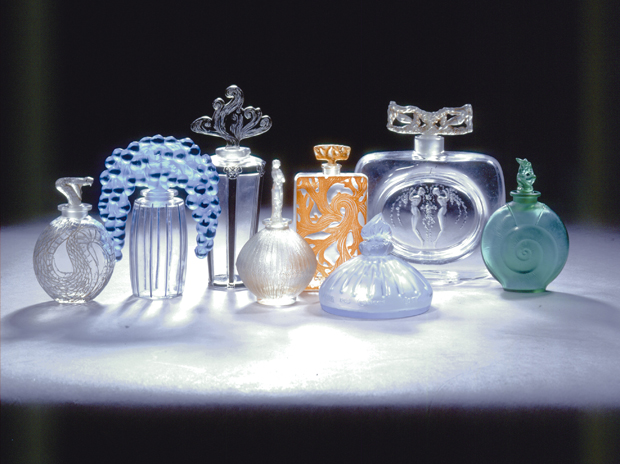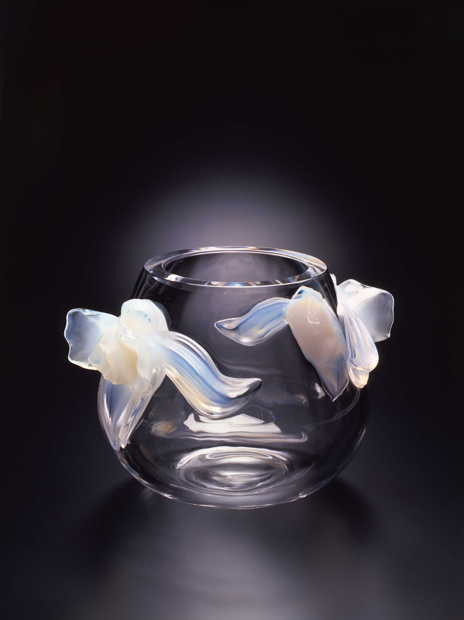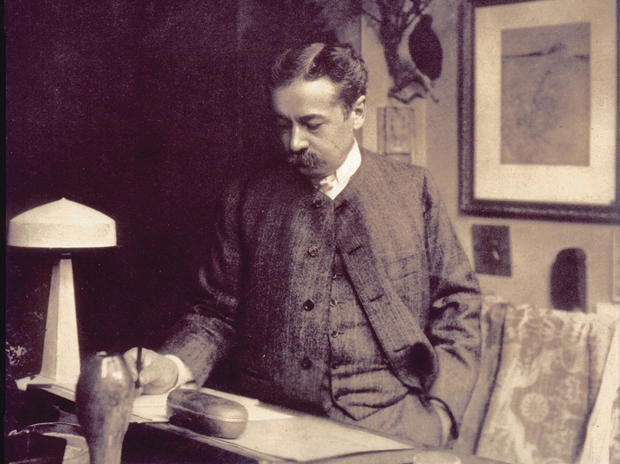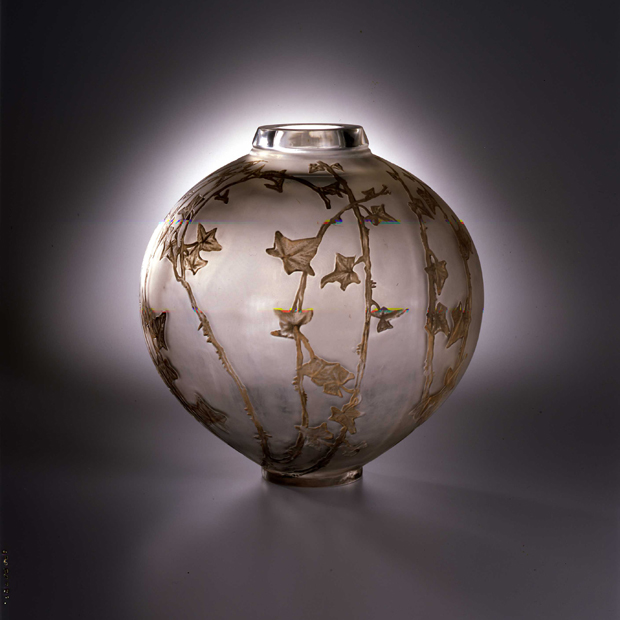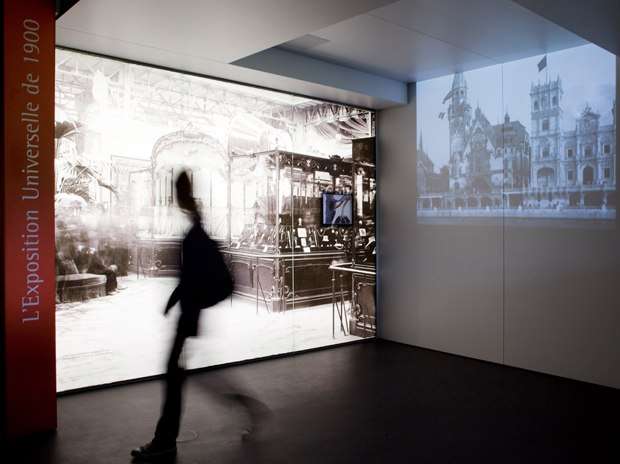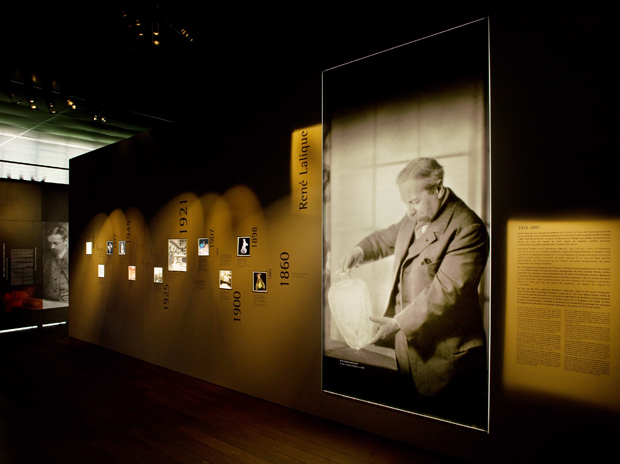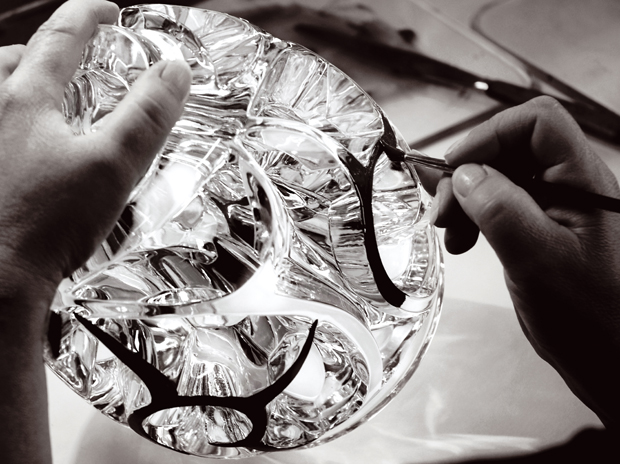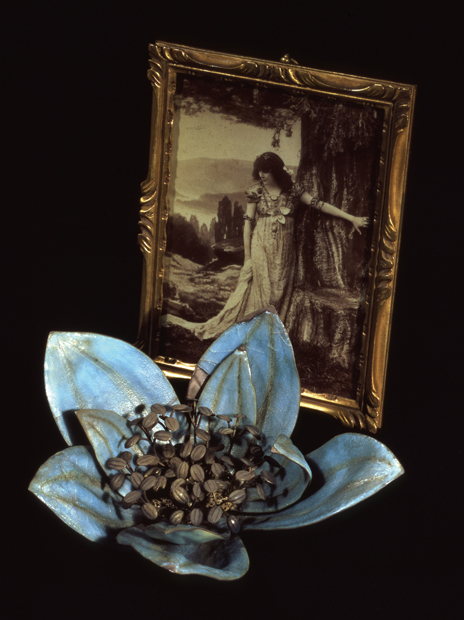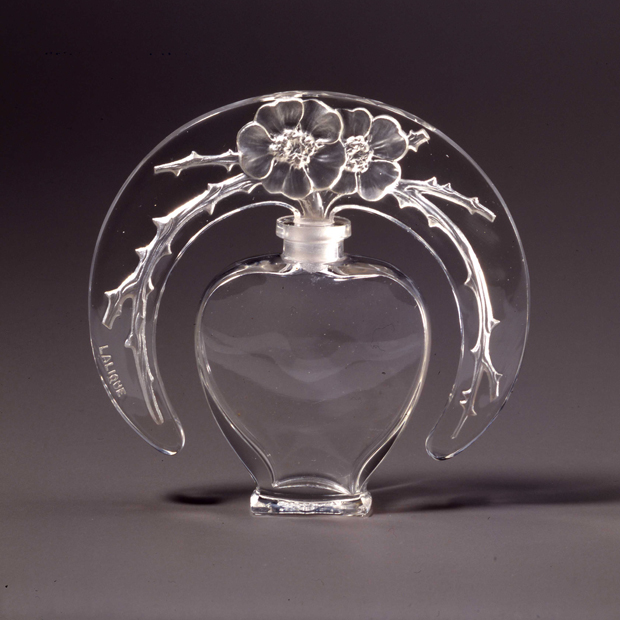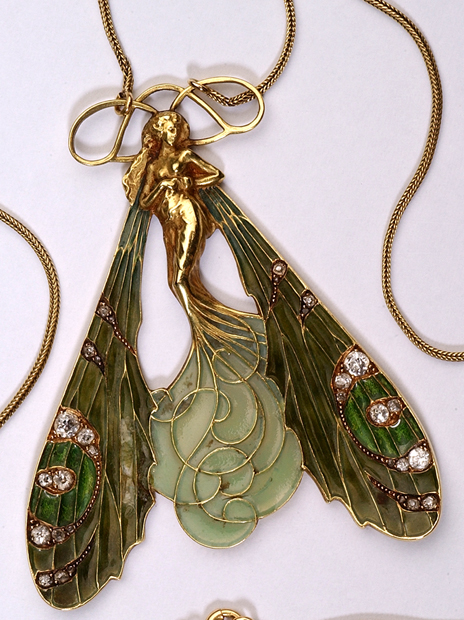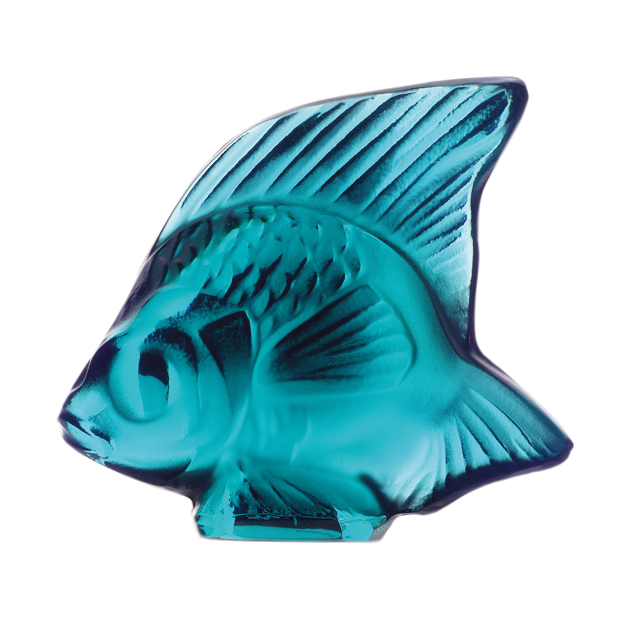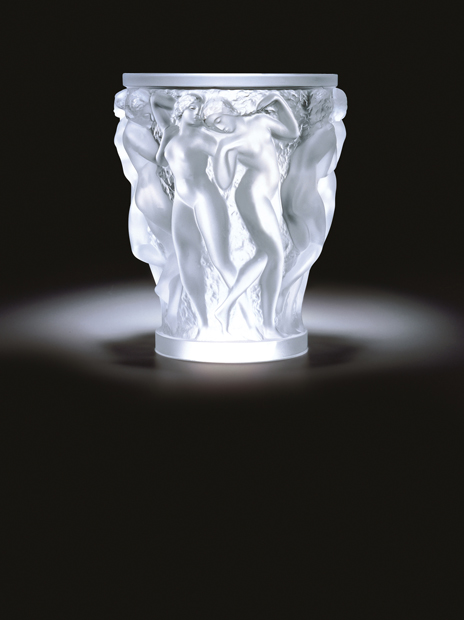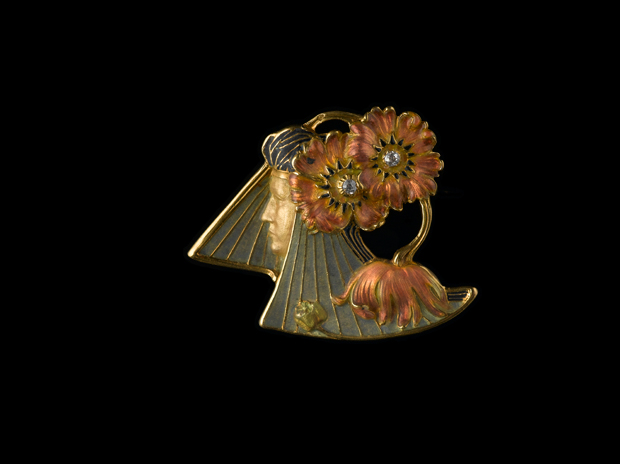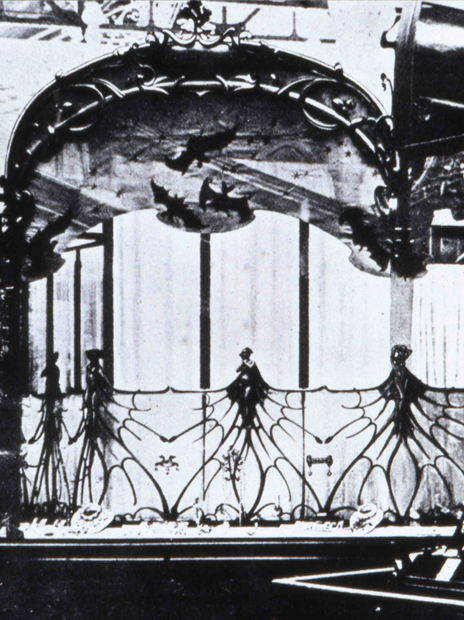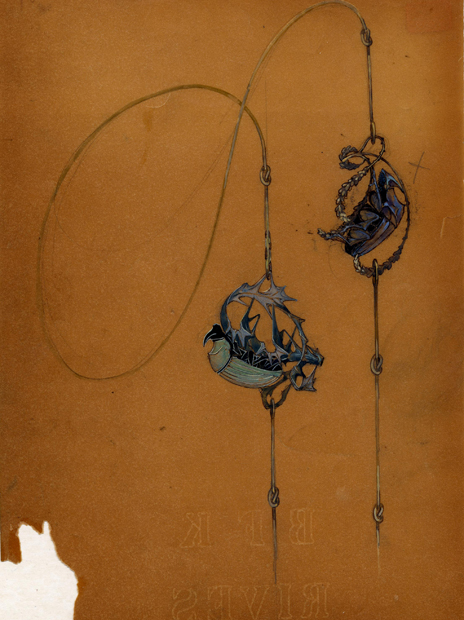“Life begets life. Energy creates energy. It is by spending oneself that one becomes rich.”
- Sarah Bernhardt
Considered the greatest actress of her generation, Sarah Bernhardt lived art’s revolutionary power and lived through its tumultuous cycles with an inextinguishable passion for both creativity and the self-knowledge such a noble quest invokes. For French master jeweller René Lalique, she was a muse, an inspiration for the extraordinary pieces she commissioned from him in the 1890s - the extravagant crown festooned with bejewelled snakes and griffins for her role in Théodora, or the exquisite crown and sapphire necklace for La Princesse.
This rich and fertile artistic collaboration brought Lalique to the centre of art’s opulent theatre in the Belle Époque and a patron - art lover and collector Calouste Sarkis Gulbenkian, an oil magnate who amassed a vast collection of original Lalique pieces. Bursting onto the scene at the 1895 Salon, he was awarded the Croix de Chevalier de la Légion d’Honneur two years later.
At the Universal Exhibition in Paris in 1900, where his extraordinary work caused an international sensation, he was triumphantly announced to the world as the inventor of modern jewellery by none other than Emile Gallé and awarded the rank of Officier de la Légion d’Honneur. While this was a prestigious honour, it is perhaps the endorsement of Gallé, until then the Gallic master of artistic expression in glass and one of the founding fathers of Art Nouveau, that speaks most eloquently for Lalique’s standing at a time of dizzying creative expression.
While Lalique was born some forty years earlier in Aÿ en Champagne, the height of Art Nouveau’s vibrant flowering coincided compellingly with the first stunning peak of his creative powers. Their artistic narratives seemed as intertwined as the boughs, stems and petals of this great artistic revolution’s organic motif.
His jewellery made stunning and innovative combinations between the classic luxuries of the day, gold and precious stones, with unusual materials such as horn, ivory, enamel and glass. The passionate belief that the sensual experiencing of the piece was of infinitely more importance than the relative value of the materials used to create it brought a sense of natural harmony to jewellery that reinvigorated the art form, and propelled him into the artistic stratosphere.
It is at this point that the story of René Lalique turns from extraordinary to unique. Hamstrung by the phenomenal success of his Art Nouveau jewellery - the market was soon flooded by inferior imitations of his styles and techniques - he began a creative process that would lead him away from that which had made his name. In what appeared to be a disastrously counter-intuitive move, Lalique began to move away from his signature jewellery and increasingly focused his artistic attention on his experiments with glass.
By 1912, he was presenting his last ever jewellery exhibition and within a year he had bought the Combs-la-Ville glassworks where he could commercially and artistically develop his creative palette in this ancient art form. In a nod to the redolent symbiosis of Art Nouveau, Lalique began to blow glass into a precious mould of chased silver which encased and fused with the undulating grace of his transparent designs, creating a setting akin to that in which sits a diamond in a ring like a ripe fruit.
Producing perfume bottles, each one a tiny obtainable masterpiece, his creative path took in innovation after innovation - rejecting the perceived gaudiness of multi-layered multi-coloured glass, he preferred the subtlety and ephemeral power suggested by glass’s limpid and transparent natural properties.
Lalique constantly reinterpreted his lifelong themes of the eternal grace of the female form and the effortless beauty of the pure function found in flora and fauna - the natural world’s own masterpieces. In using glass, a material conventionally perceived purely in terms of its functional value, to achieve the unparalleled decorative beauty of his automobile mascots, fountains and the stunning frescos and illuminated pillars on the luxury liner the Normandie, he was once more intuitively in step with the artistic movement of the time.
Art Decó’s focus on symmetry and the beauty that flows from function germinated in all areas of design, from art to architecture to automobile design, and culminated in the International Exhibition of Modern Decorative and Industrial Arts in Paris in 1925. At this zenith of an artistic movement, just as he had twenty five years earlier, Lalique produced a triumphant display and was again rewarded by his country for his stellar achievement, being promoted to Commandeur de la Légion d’Honneur in 1926.
Presenting glassware of impeccable quality and an ethereal motif which played with the contrasts between the transparent and satin finishes he had been perfecting since embarking on his second glittering artistic career, he sealed his extraordinary legacy once more. Designed in 1927 and perhaps the most enduring symbol of Lalique’s superlative creative career, the Bacchantes vase demonstrate his masterful incorporation of the voluptuous lines of the neo-classical female nude into the Art Decó sensibility and has been in production ever since.
Lalique went on to ever more prestigious commissions, designing fountains for the Champs-Élysées and the ornate doors opening onto the residence of Prince Asaka Yasuhiko in Tokyo - known now as the Teien Palace.
The Lalique name continued to prosper even after René’s death in 1945, when his son and daughter took on the chic Parisian Lalique boutique and the Alsatian glassworks he purchased in Wingen-sur-Moder to service his ever lengthening list of illustrious clientele. This historic site had itself been the home of the Hochberg glassworks since 1715, a tradition that Lalique resuscitated fifty years after its closure. The final chapter in the Lalique story came in February 2008, when the company was incorporated into Art et Fragrance, a super successful elite perfume and jewellery outfit.
The sense the joyous, rejuvenating, self perpetuating power of art is a theme that winds its way through every facet of the Lalique story. This can be seen in the instinctive flowering of his brilliance in two of the most significant creative movements of the last two centuries, and his creative kinship with luminous greats of other artistic forms such as Bernhardt. It is a palpable magic ingredient in the Musée Lalique, which opened on the Wingen-sur-Moder site this month to great acclaim.
In a serene homage to the verdant naturalism of Art Nouveau, this exquisite collection of semi-submerged buildings feature landscaped green roofs which form a powerful bond with the beautiful Alsatian scenery and foreshadow their centrepiece - the delight of a concealed ornamental garden.
This facility, designed by the renowned Ducks Scéno in partnership with Agence Wilmotte - which worked on prestigious projects at both the Louvre and the Musée d´Orsay, offers a unique opportunity to delve into the vast legacy of René Lalique and his heirs, Marc and Marie-Claude. Exhibitions of René’s pioneering design work in the perfume industry sit alongside presentations featuring many original pieces from his two crowning triumphs at the Universal Exhibition and the Exhibition of Modern Decorative and Industrial Arts, and the staggering range of his glittering patrons.
It is the ever prescient desire to create, and in so creating to evolve - to be better, that daubs us with the indelible mark of humanity. As a clock face, the revolving hands of art tick round the full sweep of history, chiming an eternal tribute as each great movement and moment in human innovation creates itself and all within its furious human power before lying in wait, exhausted, for a successor.
From Art Nouveau to Art Decó, British kings to Japanese princes, thespian goddesses of the Belle Époque to the stylings of Jazz Age flappers, René Lalique held the world in thrall with his boundless quest for that self reborn through art. In the words of Sarah Bernhardt it is in this that his greatest riches are bequeathed.
- Benjamin Stewart
Musée Lalique
Address: 40 Rue du Hochberg
Wingen-sur-Moder, 67290
Tel: 3 88 89 08 14
Website: www.musee-lalique.com
Boutique Lalique
Address: 11 Rue Royale
Paris, 75008
Tel: 1 53 05 12 81
Website: www.cristallalique.fr
- Sarah Bernhardt
Considered the greatest actress of her generation, Sarah Bernhardt lived art’s revolutionary power and lived through its tumultuous cycles with an inextinguishable passion for both creativity and the self-knowledge such a noble quest invokes. For French master jeweller René Lalique, she was a muse, an inspiration for the extraordinary pieces she commissioned from him in the 1890s - the extravagant crown festooned with bejewelled snakes and griffins for her role in Théodora, or the exquisite crown and sapphire necklace for La Princesse.
This rich and fertile artistic collaboration brought Lalique to the centre of art’s opulent theatre in the Belle Époque and a patron - art lover and collector Calouste Sarkis Gulbenkian, an oil magnate who amassed a vast collection of original Lalique pieces. Bursting onto the scene at the 1895 Salon, he was awarded the Croix de Chevalier de la Légion d’Honneur two years later.
At the Universal Exhibition in Paris in 1900, where his extraordinary work caused an international sensation, he was triumphantly announced to the world as the inventor of modern jewellery by none other than Emile Gallé and awarded the rank of Officier de la Légion d’Honneur. While this was a prestigious honour, it is perhaps the endorsement of Gallé, until then the Gallic master of artistic expression in glass and one of the founding fathers of Art Nouveau, that speaks most eloquently for Lalique’s standing at a time of dizzying creative expression.
While Lalique was born some forty years earlier in Aÿ en Champagne, the height of Art Nouveau’s vibrant flowering coincided compellingly with the first stunning peak of his creative powers. Their artistic narratives seemed as intertwined as the boughs, stems and petals of this great artistic revolution’s organic motif.
His jewellery made stunning and innovative combinations between the classic luxuries of the day, gold and precious stones, with unusual materials such as horn, ivory, enamel and glass. The passionate belief that the sensual experiencing of the piece was of infinitely more importance than the relative value of the materials used to create it brought a sense of natural harmony to jewellery that reinvigorated the art form, and propelled him into the artistic stratosphere.
It is at this point that the story of René Lalique turns from extraordinary to unique. Hamstrung by the phenomenal success of his Art Nouveau jewellery - the market was soon flooded by inferior imitations of his styles and techniques - he began a creative process that would lead him away from that which had made his name. In what appeared to be a disastrously counter-intuitive move, Lalique began to move away from his signature jewellery and increasingly focused his artistic attention on his experiments with glass.
By 1912, he was presenting his last ever jewellery exhibition and within a year he had bought the Combs-la-Ville glassworks where he could commercially and artistically develop his creative palette in this ancient art form. In a nod to the redolent symbiosis of Art Nouveau, Lalique began to blow glass into a precious mould of chased silver which encased and fused with the undulating grace of his transparent designs, creating a setting akin to that in which sits a diamond in a ring like a ripe fruit.
Producing perfume bottles, each one a tiny obtainable masterpiece, his creative path took in innovation after innovation - rejecting the perceived gaudiness of multi-layered multi-coloured glass, he preferred the subtlety and ephemeral power suggested by glass’s limpid and transparent natural properties.
Lalique constantly reinterpreted his lifelong themes of the eternal grace of the female form and the effortless beauty of the pure function found in flora and fauna - the natural world’s own masterpieces. In using glass, a material conventionally perceived purely in terms of its functional value, to achieve the unparalleled decorative beauty of his automobile mascots, fountains and the stunning frescos and illuminated pillars on the luxury liner the Normandie, he was once more intuitively in step with the artistic movement of the time.
Art Decó’s focus on symmetry and the beauty that flows from function germinated in all areas of design, from art to architecture to automobile design, and culminated in the International Exhibition of Modern Decorative and Industrial Arts in Paris in 1925. At this zenith of an artistic movement, just as he had twenty five years earlier, Lalique produced a triumphant display and was again rewarded by his country for his stellar achievement, being promoted to Commandeur de la Légion d’Honneur in 1926.
Presenting glassware of impeccable quality and an ethereal motif which played with the contrasts between the transparent and satin finishes he had been perfecting since embarking on his second glittering artistic career, he sealed his extraordinary legacy once more. Designed in 1927 and perhaps the most enduring symbol of Lalique’s superlative creative career, the Bacchantes vase demonstrate his masterful incorporation of the voluptuous lines of the neo-classical female nude into the Art Decó sensibility and has been in production ever since.
Lalique went on to ever more prestigious commissions, designing fountains for the Champs-Élysées and the ornate doors opening onto the residence of Prince Asaka Yasuhiko in Tokyo - known now as the Teien Palace.
The Lalique name continued to prosper even after René’s death in 1945, when his son and daughter took on the chic Parisian Lalique boutique and the Alsatian glassworks he purchased in Wingen-sur-Moder to service his ever lengthening list of illustrious clientele. This historic site had itself been the home of the Hochberg glassworks since 1715, a tradition that Lalique resuscitated fifty years after its closure. The final chapter in the Lalique story came in February 2008, when the company was incorporated into Art et Fragrance, a super successful elite perfume and jewellery outfit.
The sense the joyous, rejuvenating, self perpetuating power of art is a theme that winds its way through every facet of the Lalique story. This can be seen in the instinctive flowering of his brilliance in two of the most significant creative movements of the last two centuries, and his creative kinship with luminous greats of other artistic forms such as Bernhardt. It is a palpable magic ingredient in the Musée Lalique, which opened on the Wingen-sur-Moder site this month to great acclaim.
In a serene homage to the verdant naturalism of Art Nouveau, this exquisite collection of semi-submerged buildings feature landscaped green roofs which form a powerful bond with the beautiful Alsatian scenery and foreshadow their centrepiece - the delight of a concealed ornamental garden.
This facility, designed by the renowned Ducks Scéno in partnership with Agence Wilmotte - which worked on prestigious projects at both the Louvre and the Musée d´Orsay, offers a unique opportunity to delve into the vast legacy of René Lalique and his heirs, Marc and Marie-Claude. Exhibitions of René’s pioneering design work in the perfume industry sit alongside presentations featuring many original pieces from his two crowning triumphs at the Universal Exhibition and the Exhibition of Modern Decorative and Industrial Arts, and the staggering range of his glittering patrons.
It is the ever prescient desire to create, and in so creating to evolve - to be better, that daubs us with the indelible mark of humanity. As a clock face, the revolving hands of art tick round the full sweep of history, chiming an eternal tribute as each great movement and moment in human innovation creates itself and all within its furious human power before lying in wait, exhausted, for a successor.
From Art Nouveau to Art Decó, British kings to Japanese princes, thespian goddesses of the Belle Époque to the stylings of Jazz Age flappers, René Lalique held the world in thrall with his boundless quest for that self reborn through art. In the words of Sarah Bernhardt it is in this that his greatest riches are bequeathed.
- Benjamin Stewart
Musée Lalique
Address: 40 Rue du Hochberg
Wingen-sur-Moder, 67290
Tel: 3 88 89 08 14
Website: www.musee-lalique.com
Boutique Lalique
Address: 11 Rue Royale
Paris, 75008
Tel: 1 53 05 12 81
Website: www.cristallalique.fr
Musée Lalique





